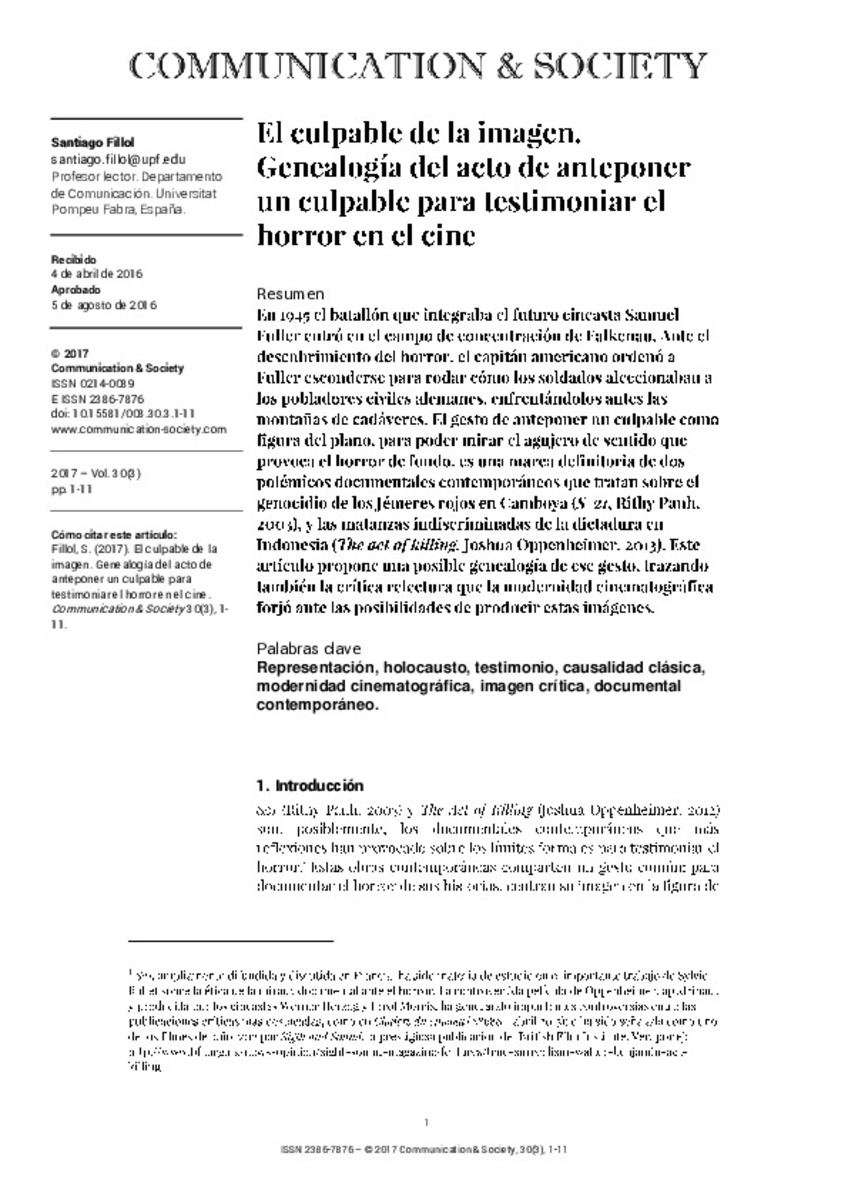El culpable de la imagen. Genealogía del acto de anteponer un culpable para testimoniar el horror en el cine
Other Titles:
The Culprit of the Image. Genealogy of the act of putting forth a culprit to witness the horror in cinema
Keywords:
Representación
holocausto
testimonio
causalidad clásica
modernidad cinematográfica
imagen crítica
documental contemporáneo
Publisher:
Servicio de Publicaciones de la Universidad de Navarra
Citation:
Fillol, S. (Santiago). "El culpable de la imagen. Genealogía del acto de anteponer un culpable para testimoniar el horror en el cine". Communication & Society. 30 (3), 2017, 1 - 11
Statistics and impact
0 citas en

0 citas en

Items in Dadun are protected by copyright, with all rights reserved, unless otherwise indicated.








